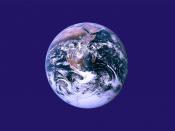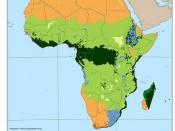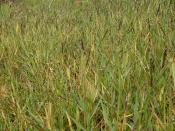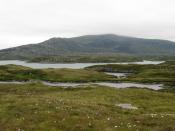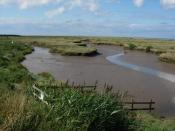*
*
*
Pablo Gutiérrez Salazar #14 Karim Gattás RodrÃguez #12 Ana Gabriela Portillo #20 Pedro Cárdenas #4
*
*
*
Index
Chart Flora pictures Fauna pictures What are water and salt biomes? Why are fresh and salt water biomes important? Location Map (World) Map (Mexico) Bibliography
*
*
*
Fresh and Salt water biomes
*
*
*
Flora
*
*
*
Fauna
*
*
*
What are fresh and salt water biomes?
The Ramsar Convention identifies wetlands as "areas of marsh, fen, peatland or water, whether natural or artificial, permanent or temporary, with water that is static or flowing, fresh, brackish or salt, including areas of marine water the depth of which at low tide does not exceed six metres and may incorporate riparian and coastal zones adjacent to the wetlands, and islands or bodies of marine water deeper than six metres at low tide lying within the wetlands". This broad "official" definition includes a huge variety of ecosystems. The Convention identifies 6 wetland systems: marine - not influenced by river flows (e.g. coastal lagoons, rocky shores, and coral reefs) estuarine - where rivers meet the sea (e.g. deltas, tidal marshes, and mangrove swamps) lacustrine - areas of permanent water with little flow (e.g. wetlands associated with lakes) riverine - land periodically inundated by river overflow (e.g. wetlands along rivers and streams) palustrine - where there is more or less permanent water (e.g. marshes, swamps, and bogs) artificial - wetlands created or radically modified by humans (e.g. fish ponds, gravel pits, salt pans)
*
*
*
Why are water biomes important?
The freshwater and marine biomes are probably the most important of all the biomes. Their medium, water, is a major natural resource. Water is the basis of life, it supports life, and countless species live in it for all or part of their lives. Freshwater biomes supply us with our drinking water and water for crop irrigation. The world's oceans have an even greater effect on global climate than forests do. Water has a high capacity for heat, and because the Earth is mostly covered with water, the temperature of the atmosphere is kept fairly constant and able to support life. In addition to this climate-buffering capacity, the oceans contain several billion photosynthetic plankton which account for most of the photosynthesis occuring on Earth. Without these, there might not be enough oxygen to support such a large world population and complex animal life.
*
*
*
Location
They are found all around the world in every continent.
*
*
*
Map (world)
All the blue is water
*
*
*
Map (mexico)
All blue is water
*
*
*
Bibliography
http://www.vivanatura.org/Maps%20Mexican%20ecosystems.html
http://images.google.com.mx/imghp?svnum=10&um=1&hl=es&btnG=B%C3%BAsqueda+de+im%C3%A1genes
http://www.ucmp.berkeley.edu/exhibits/biomes/index.php
http://www.ilike2learn.com/ilike2learn/Rivers/Indus%20River.html
